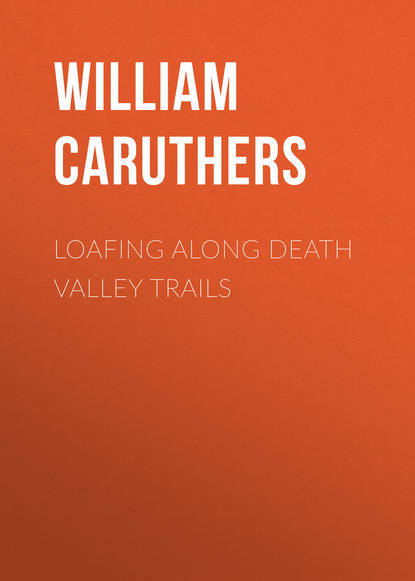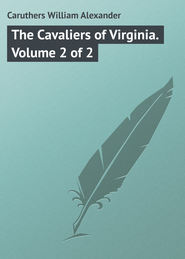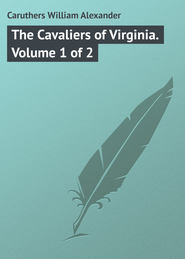По всем вопросам обращайтесь на: info@litportal.ru
(©) 2003-2024.
✖
Loafing Along Death Valley Trails
Настройки чтения
Размер шрифта
Высота строк
Поля
Swamper Ike had justified his faith.
Chapter XXV
Ballarat. Ghost Town
In the early 1890’s gold discovered on the west side of the Panamint in Pleasant Canyon caused the rush responsible for Ballarat. For more than 20 years the district had been combed by prospectors holed in at Post Office Spring, about one half mile south of the site upon which Ballarat was subsequently built. Here the government had a small army post and here soldiers, outlaws, and adventurers received their mail from a box wired in the crotch of a mesquite tree.
The Radcliffe, which was the discovery mine was a profitable producer. The timbers and machinery were hauled from Randsburg over the Slate Range and across Panamint Valley, to the mouth of the canyon. There, under the direction of Oscar Rogers, it was packed on burros and taken up the steep grade to the mine site.
Copperstain Joe, a noted half-breed Indian made the next strike. With a specimen, he went to Mojave where he showed it to Jim Cooper. For five dollars and a gallon of whiskey he led Cooper to the site.
But his deal with Cooper interested me less than the cunning of his burro, Slick. Copperstain strode into a hardware store and asked for a lock. “It’s for Slick’s chain. Picks a lock soon as I turn my back – dam’ him.”
The merchant showed him a lock of intricate mechanism, “He won’t pick this. Costs more, but worth it.”
“I don’t care what it costs,” Copperstain said and bought it. Later he looped the chain around the burro’s feet, fastened the links with the lock and tethered Slick to a stake. “That’ll hold you – ” he said defiantly.
The next morning he was back in the store, belligerent. “Helluva lock you sold me. Slick picked it in no time.”
“Impossible.”
“The burro’s gone, ain’t he?” Copperstain bristled, and reaching into his pocket, produced the lock. “See that nail in the keyhole? I didn’t put it there. Slick just found a nail – that’s all.”
The future of Pleasant Canyon seemed assured and it was decided to move the two saloons and grocery to the flats below, where a town would have room to grow.
When citizens met to choose a name, George Riggins, a young Australian suggested the new town be given a name identified with gold the world over. Ballarat in his native country met the requirement and its name was adopted.
Shorty Harris discovered The Star, The Elephant, the World Beater, The St. Patrick. In Tuba, Jail, Surprise, and Goler Canyons more strikes were made. It is curious that none were made in Happy Canyon.
The production figures of early mines are rarely dependable and the yield is often confused with that obtained by swindlers from outright sale or stock promotion. My friend, Oscar Rogers, superintendent, told me the Radcliffe produced a net profit of approximately $500,000. Less authentic are figures attributed to the following:
The O. B. Joyful in Tuba Canyon, $250,000; The Gem in Jail Canyon, $150,000; and Shorty Harris’ World Beater, $200,000.
Among the noted of Ballarat residents was John LeMoyne, a Frenchman. He discovered a silver mine in Death Valley but the best service he gave the desert was a recipe for coffee. He walked into Ballarat one day and had lunch. The lady who owned the cafe asked if everything suited. “All but the coffee,” John said.
“How do you make your coffee?” she asked.
“Madame, there’s no trick about making good coffee. Plenty coffee. Dam’ little water.”
From one end of Death Valley country to the other, coffee is judged by John LeMoyne’s standard. You may not always get it, but mention it and the waiter will know.
For years LeMoyne held his silver claim in spite of offers far beyond its value, which he believed was $5,000,000. But once when the urge to return to his beloved France was strong and Goldfield, Tonopah, and Rhyolite excited the nation, he weakened and decided to accept an offer said to have been $200,000. “But,” he told the buyers, “it must be cash.”
After a huddle, John’s demand was met and a check offered. John brushed it aside. “But this eez not cash,” he complained. No, he wouldn’t go to town to get the cash. He had work to do. “You get eet.”
Disgusted, the buyers left and John LeMoyne continued to wear his rags, eat his beans, and dream of La Belle France.
A young Shoshone Indian came into Keeler excited as an Indian ever gets, looked up Shorty Harris and said: “Short Man, your friend go out. No come back. Maybe him sick.” It was midsummer, but LeMoyne had undertaken to reach his claim.
In the bottom of the valley, Shorty identified LeMoyne’s tracks by a peculiar hobnail which LeMoyne used in his shoes. He followed the tracks to Cottonwood Spring and there found an old French pistol which he knew had belonged to LeMoyne. Convinced he was on the right trail, he went on and after a mile or two met Death Valley Scotty.
“I know why you’re here,” Scotty said. “I’ve just found his body.”
LeMoyne was partially eaten by coyotes and nearby were his dead burros. Though tethered to the mesquite with slender cotton cords which they could easily have broken, the patient asses had elected to die beside him.
And there ended the dream of the glory trail back to the France he loved. Those who believe in the jinx will find something to sustain their faith in the record of John LeMoyne’s mine.
After LeMoyne’s death, Wild Bill Corcoran who had made and lost fortunes in the lush days of Rhyolite, set out from Owens Valley to relocate it. Never a ranting prohibitionist, Bill believed that the best remedy for snake bite was likker in the blood when the snake bit. When he reached Darwin he was not feeling well and stopped long enough for a nip with friends and to get a youngster to drive his car and help at the camp.
It was midsummer, with record temperature but Bill wanted John LeMoyne’s mine. Becoming worse in the valley he stopped in Emigrant Canyon and sent the boy back for a doctor. Bill crawled into an old shack under the hill. When the boy and the doctor came, they found Bill Corcoran on the floor, his hand stretched toward a bottle of bootleg liquor. His soul had gone over the hill.
One after another, five others followed Bill to file on LeMoyne’s claim and each in turn joined Bill over the hill.
LeMoyne’s Christian name was Jean. His surname has been spelled both Lemoigne and Lemoine. The claim from which Indians had formerly taken lead was filed upon by LeMoyne in 1882.
Joe Gorsline, a graduate of Columbia, with a background of wealth, came to Ballarat during the rush, looked over the town. “Wouldn’t spend another day in this dump for all the gold in the mint,” he announced. He had a few drinks, heard a few yarns, eyed a few girls in the honkies. It was all new to Joe, but something about the informalities of life appealed to him and in a little while he was renamed Joe Goose.
Then the town’s constable shot its Judge and Ballarat chose him to succeed the deceased. Not liking the laws of the code, he made a batch of his own, which were never questioned. While watching the flow of time and liquor, he “went desert” and put aside the things that might have been for the more alluring things-as-they-are.
When Ballarat became a ghost town, Joe Gorsline took his body to the city, but his soul remained and years afterward when he died, a hearse came down the mountain and in it was Joe Gorsline, home again. He is buried in a little cemetery out on the flat and in the spring the golden sun cups, grow all around and you walk on them to get to his grave.
Adding a cultural touch to Ballarat was an English nobleman who “going desert” tossed his title out of the window, donned overalls and brogans and promptly earned the approving verdict, “An all right guy.” Soon he was drinking with the toper and dancing with the demimonde. Like others, he did his own cooking and washing. He lived in a ’dobe cabin which, because it was on the main street, had its window shades always down.
But there was one little custom of his British routine he never abandoned and this was discovered by accident. He stopped in John Lambert’s saloon one evening before going to his cabin for dinner. He left his watch on the bar and had gone before Lambert noticed it. An hour later Lambert, having an opportunity to get away, took the watch to the cabin. John thus reported what he saw: “He was eating his dinner and bigod – he had on a white shirt, wing collar, and swallow tail.”
Ballarat chuckled but no one suggested a lynching party. They knew how deep grow the roots in the soil one loves. “Maybe,” said Lambert, “that’s why John Bull always wins the last battle. They give up nothing.”
A familiar figure throughout Death Valley country was Johnny-Behind-the-Gun – small and wiry and as much a part of the land as the lizard. His moniker was acquired from his habit of settling disputes without cluttering up the courts. Johnny, whose name was Cyte, accounted for three or four sizable fortunes. Having sold a claim for $35,000 he once bought a saloon and gambling hall in Rhyolite, forswearing prospecting forever.
Johnny advertised his whiskey by drinking it and the squareness of his game, by sitting in it. One night the gentleman opposite was overwhelmed with luck and his pockets bulged with $30,000 of Johnny’s money. Having lost his last chip, Johnny said, “I’ll put up dis place. Ve play vun hand and quit.”
Johnny lost. He got up, reached for his hat. “Vell, my lucky friend, I’ll take a last drink mit you.” He tossed the liquor, lighted a cigar. “Goodnight, chentlemen,” he said. “I go find me anudder mine.”
Johnny had several claims near the Keane Wonder in the Funeral Mountains, held by a sufferance not uncommon among old timers, who respected a notice regardless of legal formalities.
Senator William M. Stewart, Nevada mining magnate, had employed Kyle Smith, a young mining engineer to go into the locality and see what he could find. Smith, a capable and likable chap, in working over the districts, located several claims open for filing by reason of Johnny’s failure to do his assessment work.
It is not altogether clear what happened between Johnny and Smith, but Smith’s body was found after it had lain in the desert sun all day. There being no witnesses the only fact produced by sheriff and coroner was that Smith was dead. Johnny went free. Other escapades with Johnny-Behind-the-Gun occurred with such frequency that he was finally removed from the desert for awhile as the guest of the state.
In a deal with Tom Kelly, Johnny was hesitant about signing some papers according to an understanding. His trigger quickness was explained to Kelly who was not impressed. He went to Johnny and asked him to sign up. Johnny refused. Kelly said calmly, “Johnny, do you see that telephone pole?”
“Yes, I see. Vot about?”
“If you don’t sign, you’re going to climb it.” Johnny signed. He put his gun away when he acquired a lodging house at Beatty, where he died in 1944.
Reminiscing one day in the old saloon he had owned, Chris Wichts slapped the bar: “I’ve taken as much as $65,000 over this old bar in one month.” He had none of it now but in a little cabin in Surprise Canyon with a stream running by his door, and a memory that retained only the laughs of his life, he didn’t need $65,000.
“A city fellow came into the cafe one day. Snooty sort. I told him we had some nice tender burro steaks. He flew off the handle. Said he wanted porterhouse or nothing. I served him. When he finished he apologized for being rude and said his porterhouse was good as he ever ate. I went into the kitchen and came back with a burro shank, shoved it in his face and said, ‘Mister, you ate the meat off this burro leg.’ I thought he’d murder me.”







